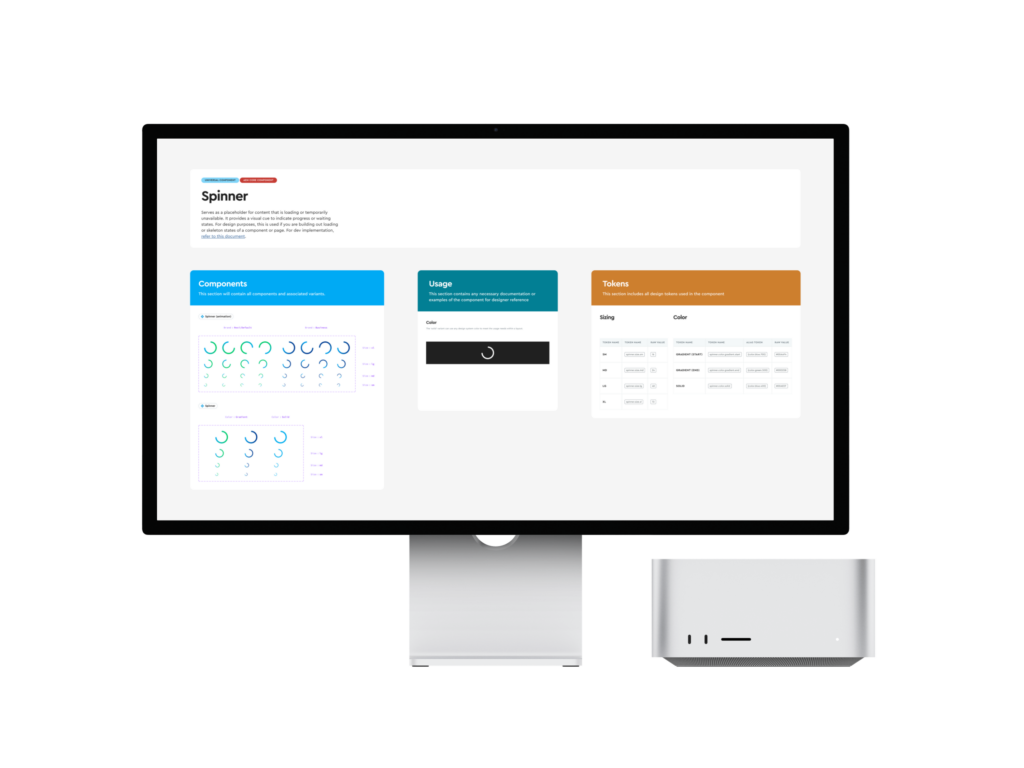Cox
Cox Design System
My Role
As a core contributor and UX lead to the Cox Design System (CDS), I helped drive its evolution from a collection of loosely connected assets into a streamlined, scalable system. My work focused on reorganizing the system’s structure, introducing new components, improving documentation, and supporting day-to-day design operations across teams.
Challenges
The Cox Design System was expanding rapidly during its development, but its underlying structure lacked clarity and consistency. A dozen components had already been built before I joined the team, with organization driven by speed rather than long-term scalability. Documentation and usage guidelines varied in depth, and the system lacked a cohesive strategy for extensibility and reuse.
Key issues included:
-
Ambiguous or technology-driven component naming conventions
-
Fragmented documentation across design and code
-
Single-page component library with poor navigability and discoverability
-
Lack of a feedback loop between designers and engineers
Key Contributions
1. System Reorganization
Led a major reorganization of the Cox Design System component library while maintaining daily system usage.
- Separated components per page, enhancing navigation, wayfinding and collaboration
- Collaborated with teams to ensure the new structure aligned with how designers and developers use the system day to day.
- Introduced component taxonomy by platform, informing designers of a component’s availability per technology stack.
2. New Components & Enhancements
-
Built a wide range of tokenized components using Tokens Studio and Figma Variables, structured across atomic, molecular, and organism levels for use in the design system.
-
Upgraded components to better reflect live product behavior, increasing alignment between design and development and reducing the gap from concept to implementation.
-
Simplified the Design System using Figma Variables, enabling advanced theming and integrating translation into foundational components to create a more efficient and performant system.
3. Documentation & Support Strategy
-
Re-housed detailed global component information to Storybook, and reshaped usage guidelines within Figma to be designer specific.
-
Created “Getting Started” and “Table of Contents” pages to aid discoverability, onboarding and support.
-
Advocated for inclusive language and consistent tone throughout the organization with a shared glossary for design system terms.
-
Introduced a dedicated Cox Design System channel to centralize system updates, changelogs, feedback, and Q&A.
4. Cross-functional Partnership
-
Established regular syncs with engineering and design teams to share feedback, QA components, and triage system bugs.
-
Led dedicated channels and workspaces to support long-term collaboration between accessibility and design teams.
-
Maintained close collaboration with product stakeholders to ensure system evolution aligned with business goals.
Impact
-
Reduced component ambiguity and redundancy, improving adoption and streamlining productivity across teams
-
Accelerated onboarding by delivering a clearer, better-structured documentation experience
-
Enabled the design system to scale efficiently across products without bloating the component set
-
Fostered stronger collaboration between design and engineering through shared understanding and processes
Reflections
Design system work is equal parts strategy, communication, and craft. At Cox, I had the opportunity to shape not just components, but how teams think about consistency, flexibility, and collaboration. The process taught me the importance of balance: between specificity and reuse, between structure and evolution, and between design excellence and team enablement.
Let’s Connect: contact@designbyamiller.com
Here goes your text … Select any part of your text to access the formatting toolbar.
